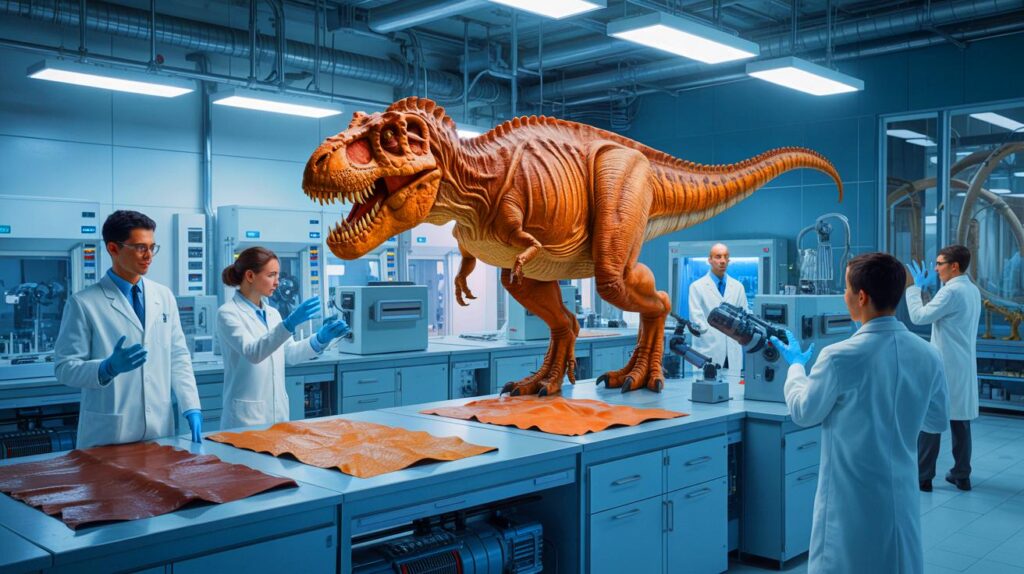| In Brief |
|
Recent scientific advancements present fascinating possibilities, sometimes bordering on the fantastical. Among these innovations is the idea of lab-grown leather made from the fossilized collagen of Tyrannosaurus rex, capturing the imagination of fashion and science enthusiasts alike. However, paleontology experts express concerns regarding the authenticity of this bold project. In this article, we will closely examine the technical and scientific challenges surrounding the creation of this revolutionary material and its implications for the fashion industry.
The Limits of Authenticity of T. Rex Leather
According to dinosaur specialists, recent announcements regarding lab-grown T. rex leather raise questions about their scientific validity. Indeed, creating genuine Tyrannosaurus rex leather would require preserved DNA from this prehistoric predator. However, no DNA from the dinosaur era has ever been discovered. While fragments might survive under specific conditions for several million years, the complete absence of T. rex DNA renders the project scientifically questionable.
Thomas Holtz, Jr., a paleontologist at the University of Maryland, labels this initiative as “misleading” and closer to fiction than science. He explains that DNA begins to degrade immediately after death, and the oldest preserved DNA discovered to date, found in Greenland, is approximately 2 million years old. In comparison, T. rex became extinct 66 million years ago. Researchers have only found collagen in the fossilized bones of T. rex, not in the skin, which is crucial for creating authentic leather.
A Prehistoric Fashion Reinvented
The companies involved in this ambitious project aim to develop dinosaur-inspired leather, produced from T. rex collagen. Collagen, a protein found in bones, skin, and muscles, has remarkably survived in some dinosaur fossils, including an 80-million-year-old Tyrannosaurus rex.
Research conducted by MIT revealed that this ancient collagen has persisted thanks to an atomic process that protects it from degradation by water. By using the fossilized collagen of T. rex as a model, scientists plan to synthesize a complete collagen sequence. This DNA sequence will be used to create a lab-simulated material resembling skin. The process employs biofabrication, which cultivates biological structures in the lab rather than using synthetic or plant-based substitutes.
Environmental and Ethical Issues
Lab-grown T. rex leather is promoted as an eco-friendly and cruelty-free alternative to traditional leather. The project aims to reduce the environmental impact of conventional leather production, often linked to deforestation and pollution. By utilizing biofabrication techniques, this innovative material could provide a sustainable, biodegradable, and animal-friendly solution.
VML, one of the partnering companies, plans to launch luxury accessories made from T. rex leather by the end of 2025. If successful, this material could also be utilized in other industries, such as automotive. However, the project raises ethical questions regarding the use of advanced technologies to recreate elements of nature that have been extinct for millions of years.
Future Perspectives for Laboratory-Grown Leather
The collaboration between VML, Lab-Grown Leather Ltd, and The Organoid Company could signify the beginning of a new era in the fashion industry. By blending creativity and biotechnology, these companies aim to push the boundaries of what is possible in sustainable materials. Lab-grown T. rex leather could set a benchmark for innovation, ecology, and ethics.
Nevertheless, the project must overcome significant scientific challenges, including the absence of T. rex DNA and preserved skin. Researchers will also need to convince consumers of the authenticity and value of this novel material. What other advancements does science hold in store to transform our relationship with materials from the past?








